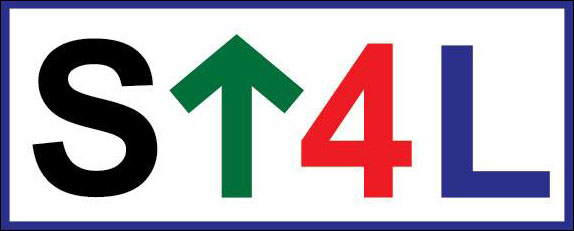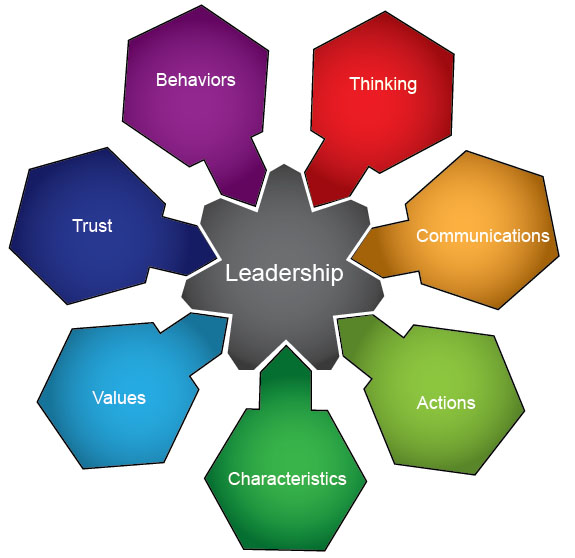 Stand Up For Leadership
Stand Up For Leadership
The aim of Stand Up For Leadership is the promotion of Leadership information, study, insight, and application for individuals, groups, teams, organizations and communities of practice. It is based on collaboration and helping move yourself and others forward in a positive direction. This is directly accomplished by engaging yourself and others to an open and collective awareness of leadership sub-systems, psychology, variation, knowledge, and their interactions. It also is based on Leadership Connections & Interconnections with the current and next generation of Leaders. To accomplish this we will promote positive Leadership theorists, tools, networks and resources.
Leadership is one of the most overused organizational terms to describe both positive and negative activities. It can be used to illustrate the capabilities of individuals, organizations and teams in terms of their performance against a subjective model of ideality. Additionally, the word Leadership is inclusive of some management and social activities. Finally, the term has many different operational definitions which are based on the situation that the Leader is interacting in.
Leadership includes personal actions, behaviors, communication, and mental skills. Ultimately the capacity for leadership is also based on personal maturity, individual personality and previous leadership experience. The argument that leadership cannot be taught is a fallacy of opinion not based on factual information or research.
Leadership is a skill that can be taught, practiced, refined and mentored by others. Additionally, when broken down into specific skills that enhance leadership can be taught at any age. While many people are described as natural leaders what this means is that these individuals exhibit the skills of leadership openly and easily in their actions, behaviors and communication techniques. Leadership training provides essential “life skills” that can help you today and in the future.
Stand Up For Leadership training introduces new concepts and theories that can be explored, discussed, debated and understood in a group or team format. An essential component of the training is the insightful experience and reflection gained by participating with others. Leadership training that has value must include the development of new thinking styles and methods.
We accomplish this by establishing a new process for leadership thinking based on a series of seven interconnected learning modules

Leadership thinking, is the ability to use different types of thinking depending on the situation, and being flexible to using different thinking styles. This section is important because it teaches leaders how to think in a complex and ever changing world of interconnected systems. Without utilizing this style of thinking, leaders will be pre-disposed to making flawed decisions, considering only a single viewpoint.
This module focuses on helping leaders improve their critical, strategic, parallel, lateral, positive thinking, and re-thinking. Session 1 Includes: Leadership Communications is a key component of success in business and teams. The ability to effectively communicate comes from a leader's experience and expertise and will influence not only how their team thinks of their projects, their environment, and their team members but it will also significantly impact how they relate to other teams, and organizations. This module will put an emphasis on how the leader is percieved by their peers, their supervisors, and their team to help them establish how well they believe they're influcing their groups, versus how they're percieved. It will also cover activities focused on providing a robust framework for expressing one's ideas in a more efficient and effective manner, and introduce a set of Leadership Idea Cards. Session 2 Includes: The Leadership Actions module takes Leadership Communications a step further, and instructions the leader on not just "talking the talk," but "walking the walk." A leader who is entirely capable of seeing the problem, understanding it, and even communicating what is wrong with the organization, will not be very effective if they're incapable of helping solve it. This module starts by teaching the leaders how to make effective; Specific, measurable, attainable, relevent, and time-bound goals. The leaders will also learn how to effectively plan using the four steps, and be provided an activity to help them learn the logistics of Teamwork, refining their strategy and tactics to become more effective. They will also be introduced to the Leadership Moons Cards. Session 3 Includes: This Leadership module will help the leaders determine what type of leadership they're accustomed to, and provide them with an additional array of leadership styles and practices to refine their own personal leadership customs. It will introduce the essential concept of Leaderful Leadership and help the participants understand diagnosing un-leaderful characteristics, and address them. This module will introduce the participants to the Leadership Styles Cards, an essential tool for learning how to create the best leadership environment for diverse groups, and dissimilar situations. Session 4 Includes: The Leadership Values module is designed to help the participants determine how to build their teams and organizations in a moral way, defining the values and ethics in a way to bolster their organizational identity. This module will help the leader to determine if they have a high set of morals, a moderate set, or a low set, as well as instruct them on improving it. This module will introduce the leaders to the Leadership Tides Cards. Session 5 Includes: Leadership Trust is especially important for the survival of an organization, how could team members feel comfortable giving their best performances if they don't trust their leadership. This module includes Trust and Betrayal, with tools to help leaders begin to mend, and ultimately rebuild broken trusts. It also includes a few team building activities, to help improve the existing trust. Session 6 Includes: The Leadership Behaviors module covers the interconnections earlier models, after going over the results of the Leadership Practices Inventory, the participants will be taught 5 conventional practices, and 10 Commitments associated with Exemplary Leadership. This module puts a specific emphasis on the difference between winning solutions and win-win solutions, helping the leaders to understand that what they might consider to be an adversary, might actually make an exceptional ally. Session 7 Includes:
o The Lost-At-Sea Leadership thinking scenario
o Leadership thinking cycle
o Thinking preferences, brain dominance
o Perception, missing information Activity
o Synchronicity
o Leadership Practices Inventory
o Six Thinking Hats
o Leadership Idea Seeds Cards
o Active Listening Activity
o S.M.A.R.T. Goals
o 4-Step Planning
o Leadership Moons Cards
o Team Planning Activity
o Leaderful Leadership
o 4-C's of Leaderful Pratice
o Leadership Styles Cards
o Random Word Teamwork Activity
o Ethics 101
o The Golden Rule
o Value Based Actions and Behaviors
o Leadership Tides Cards
o Leadership Code of Ethics Activity
o Trust and Being Trusted
o Trust and Betrayal
o Blindfold Rope Exercise
o Leadership Cards Thinking System
o Team Building
o LPI Results
o 5 Practices and 10 Commitments of Exemplary Leadership
o Leadership Stars Cards
o Operation Exurbia Activity
o Winning versus Win-Win